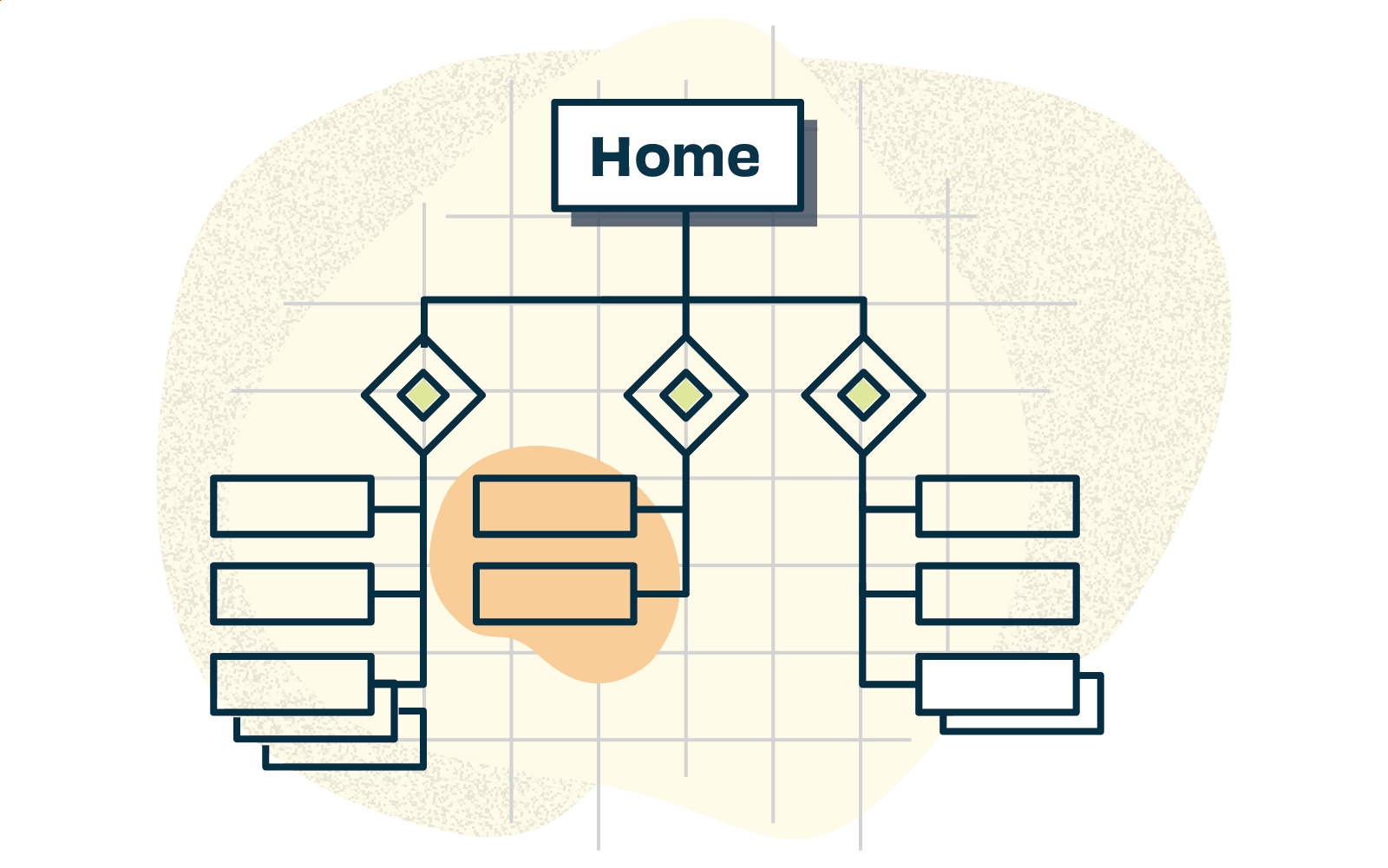Have you ever felt the confusion between IA (Information Architecture) and Sitemap? Did you mix these up, too, while working?
Well, you aren’t the only one to feel confused about it. There are tons of people who also have the similar kind of doubts as like you. Basically, these concepts work together to bring out the best result. Even though it’s true that both of these are connected, their basic navigation and other design materials are different.
The following discussion will clarify your confusion between UX sitemap and information architecture, along with mentioning its importance for UX design.
So, let’s begin with knowing about Information Architecture:
Table of Contents
What is Information Architecture (IA)?
The phrase “information architecture” was first used in the 1970s by American architect and designer Richard Saul Wurman. A digital platform’s content is organized and structured using information architecture so that you can make it easier to use and navigate.
Your consumers get help from IA in locating, comprehending, and navigating digital items. It examines the information on each screen, how it is presented, how information moves across displays, and how users consume information.
What does it do for a UX project?
Your audiences can select digital products based on their comfort to use and goal achievement, as they have so many alternatives available.
So, if your products have strong IA, users’ time and efforts being well appreciated—it will ultimately provide the most effective route to their objectives. It ensures the best customer experience.
The following statements will help you to understand the value of information architecture for a UX project:
- IA builds sitemaps, wireframes, and other elements of the UX system design. In other words, IA serves as the form structure’s template.
- IA streamlines the process when it comes to your product upgrades or modifications, as it becomes simpler to fit in new capabilities and determine the schedule.
- IA serves as the framework for any UX design project since it gives a structure to the data.
- Functionality and navigational issues are less likely to occur while IA is in practice.
What is a Sitemap?
Sitemaps can be of two different types: one is an XML sitemap that contains a list of every page on a website, and the other is a visual sitemap that is utilized during the UX design phase.
The information architecture is visually represented through optical sitemaps. The organization of the digital goods is depicted in these hierarchical diagrams, along with the connections between the various portions. Your audience’s user experience enhances as the sitemap and information architecture work together.
What does it do for a UX project?
Sitemaps are basic because they help you in creating a clear understanding of the functions and objectives of digital goods. Your audience’s journey will be correctly matched when the objective is defined.
- As your IA’s level of detail might vary, sitemaps aid in comprehending the project’s breadth. This could help you determine if you and other stakeholders are on the same page.
- Sitemaps, which essentially display a map of how to navigate a website, allow it to improve navigation. Additionally, it provides search engines with details to support site crawling.
- Sitemaps serve as a developer’s road map. Creating the pages or displays for apps or websites ensures they don’t overlook important information architecture components.
- Sitemaps also assist us in representing and comprehending the hierarchy and organization of data that users will encounter when using the product or service, ensuring that you build with UX motion
Information Architecture vs. Sitemap: What’s the Difference?
You may have known that sitemaps and information architecture are essential for a website’s development. But these are distinct from one another. We will be talking about their differences from one another in this section.
The following are some typical distinctions between an IA and a sitemap:
Content-Related
The information architect obtains all of the content, does a content audit to establish what is present, and then employs a variety of techniques to ascertain the best method of organizing it for the greatest user experience. It is aimed at the intended audience and yet applicable to and relevant to individuals.
But, a sitemap does not directly connect to the website’s content. The content of such web pages is taken into account while structuring the site structure throughout the design phase.
Need
In the end, you require both sitemaps and information architecture. You will require both in every way if you wish to develop a successful webpage, app, or other digital product.
Since you desire the consumer to like utilizing your service, IA is crucial. Your IA succeeds if visitors can easily navigate your website and locate everything they’re looking for.
The fact that a sitemap assists in directing visitors to your product also makes it vital. If you desire Google or other browsers to understand what your site provides, having them is necessary. Nowadays, most sitemaps, at least the kinds that browsers bother about, are generated automatically.
Type of Experience
The user may feel IA instead of only being seen as an image. IA should go undetected as it is all about usability and the user experience. A user could not understand what was occurring when done correctly. And most likely, they will be aware if it is horrible.
On the other hand, sitemaps are frequently found on the back end of web pages. So sitemaps that are visible to browsers go unnoticed by users.
Visual or HTML sitemaps will be available for public inspection on the front end of the website. These sitemaps create regulated traffic yet are much simpler for the general public to understand.
Direct/Indirect Benefits
An XML file called a sitemap contains a list of all the URLs on a website. Search engines scan the file to learn what a website offers and then suggest it if it most closely matches the search term. Many sites may include links that direct users to an HTML version of that sitemap.
Information architects gather the content and arrange it as a simple method for consumers to locate and utilize. This is very advantageous for end users. The user flows, user needs and interface design are the main considerations when these specialists construct an experience.
To Conclude
We may conclude that, in a UX process, information architecture serves as a basis for navigation design, while sitemaps are the graphic illustration of the information architecture. You will require both of them every time you work with different web pages.
Keep in mind both of these elements are extremely important, especially in case you want to build a highly effective site for your business and gather the maximum number of audiences.
Reference
https://technicalwriterhq.com/knowledge-management/information-architecture-vs-sitemap/
https://aufaitux.com/blog/information-architecture-vs-sitemap/











